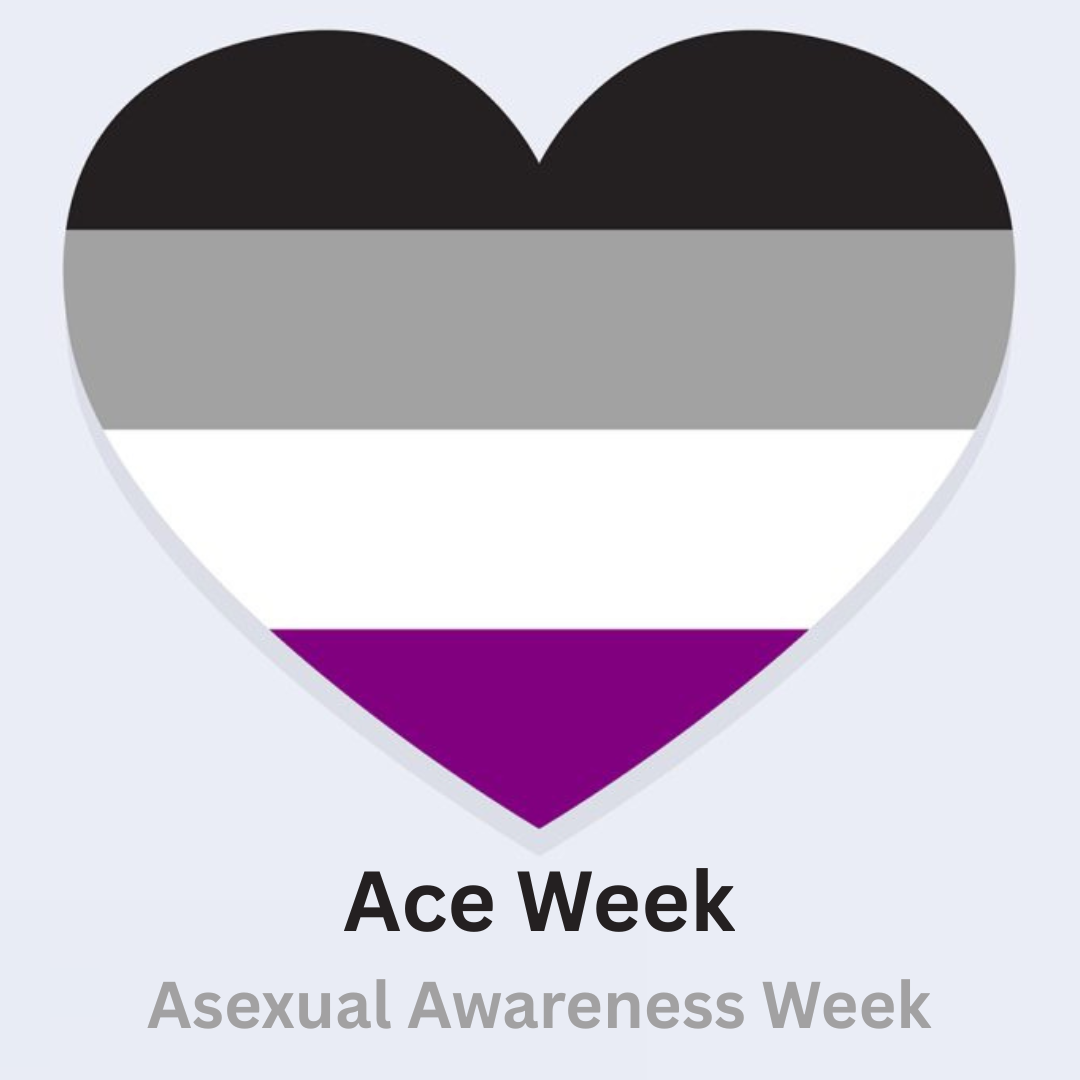
Every October, during the last full week of the month, the LGBTQ+ community celebrates Ace Week — formerly called “Asexual Awareness Week.” In 2025, that’s October 19–25, a time dedicated to uplifting asexual-spectrum identities, increasing visibility, and challenging myths that still surround the ace community.
While asexual people have always existed, mainstream recognition is still catching up. Ace Week is about education, representation, and pride. It’s also about dismantling the stigma that says love and intimacy must look only one way.
What Does It Mean to Be Asexual?
At its simplest, asexuality is a sexual orientation where someone experiences little to no sexual attraction. But the ace umbrella is broad, and identities within it are diverse.
Some key terms you’ll hear:
- Asexual (Ace): Someone who does not experience sexual attraction.
- Demisexual: Someone who experiences sexual attraction only after a deep emotional bond forms.
- Graysexual: Someone who experiences sexual attraction rarely or under specific circumstances.
- Aromantic (Aro): Someone who experiences little to no romantic attraction.
It’s important to note: being ace doesn’t automatically mean being aro, and vice versa. Attraction is multidimensional — and ace-spectrum folks are proof that human connection is beautifully complex.
The Origins of Asexual Awareness Week
Ace Week was founded in 2010 by Sara Beth Brooks, an activist who recognized the need for a dedicated time to spotlight the ace community. Early organizing was grassroots, with ace bloggers, forums, and communities like AVEN (Asexuality Visibility and Education Network) leading the charge.
Since then, Ace Week has grown into a global observance, with organizations, educators, and activists spreading awareness, creating resources, and hosting events.
Myths and Misconceptions About Asexuality
Unfortunately, asexual people face a lot of misunderstanding. Some of the most common myths include:
- “It’s just a phase.” No, honey — asexuality is a valid orientation, not a stepping stone to something else.
- “Aces just haven’t met the right person.” Attraction isn’t a light switch waiting for the “right one.” For aces, orientation isn’t about a missing ingredient.
- “Aces can’t have relationships.” Wrong again. Asexual people can and do form deep, loving partnerships — romantic or platonic. Intimacy comes in many forms.
- “It’s the same as celibacy.” Celibacy is a choice; asexuality is an orientation. Some aces may choose celibacy, others may not.
Breaking down these myths is part of why Ace Week exists: to replace stigma with truth.
The Challenges Asexual People Face
Visibility is still one of the biggest challenges for ace folks. Many LGBTQ+ spaces don’t include or understand asexuality. Healthcare providers may dismiss it as a disorder. Media representations are scarce, and when they exist, they’re often caricatures.
These gaps create real impacts:
- Isolation: Aces may feel “broken” or alone without language for their identity.
- Medical stigma: Some doctors pathologize asexuality instead of affirming it.
- Exclusion: Ace people are sometimes told they’re “not queer enough,” despite clearly being part of the LGBTQ+ family.
Ace Week is about addressing these challenges and demanding space at the LGBTQ+ table — not as guests, but as equals.
Joy, Pride, and Ace Culture
But let’s not stop at challenges — let’s celebrate the joy too! Asexual culture is rich with creativity, humor, and resilience. From memes about cake (yes, cake is basically the unofficial ace mascot 🍰) to the elegant black-gray-white-purple flag, ace pride radiates.
Ace folks have redefined what intimacy and community can look like. Many build strong chosen families, craft partnerships on their own terms, and model the radical idea that there’s no single script for love.
How to Celebrate Asexual Awareness Week
Whether you’re ace yourself or an ally, here are ways to mark the week:
- Learn and Share
Explore resources from AVEN, Ace Week’s official website, and ace creators on social media. Share what you learn with others. - Visibility Online
Post ace flags, stories, or educational graphics. Representation matters, and online spaces are powerful for spreading awareness. - Support Ace Voices
Buy books, listen to podcasts, and follow ace activists. Let ace people tell their own stories. - Challenge Myths
Speak up when you hear misinformation about asexuality. Education is allyship. - Host Events
Organize panels, watch parties, or community discussions. Even small gatherings can spark big conversations.
Intersectionality in the Ace Community
Just like the rest of the LGBTQ+ umbrella, asexual people exist across every race, culture, class, and ability. Their experiences are shaped not only by orientation but also by these intersecting identities.
For example:
- Ace people of color often face compounded erasure from both racial and LGBTQ+ communities.
- Disabled aces may encounter assumptions that their orientation is tied to disability, erasing their autonomy.
- Religious aces may have their identity dismissed as “piety,” ignoring the truth of their orientation.
Ace Week reminds us that no two ace journeys are the same — and every experience deserves respect.
Why Ace Visibility Matters
Asexuality is often called the “invisible orientation.” But invisibility is dangerous. When ace people aren’t seen, their needs are ignored — in healthcare, in media, in LGBTQ+ spaces. Visibility brings validation, resources, and safety.
Ace Week isn’t just about telling the world aces exist. It’s about celebrating ace joy, demanding recognition, and building a culture where no one feels broken for being who they are.
Looking Toward the Future
The ace movement is growing. Each year, more people discover language that fits their experiences, more media shows authentic ace characters, and more LGBTQ+ organizations include ace voices. But the work continues.
The future of ace visibility means:
- Inclusive sex ed that covers asexuality.
- Healthcare that affirms ace patients without pathologizing them.
- Representation in media that goes beyond stereotypes.
- Solidarity from the wider LGBTQ+ community.
Because every ace person deserves to live proudly and visibly.
In Solidarity, Always
– Ryder
Discover more from Ryder Tombs
Subscribe to get the latest posts sent to your email.


